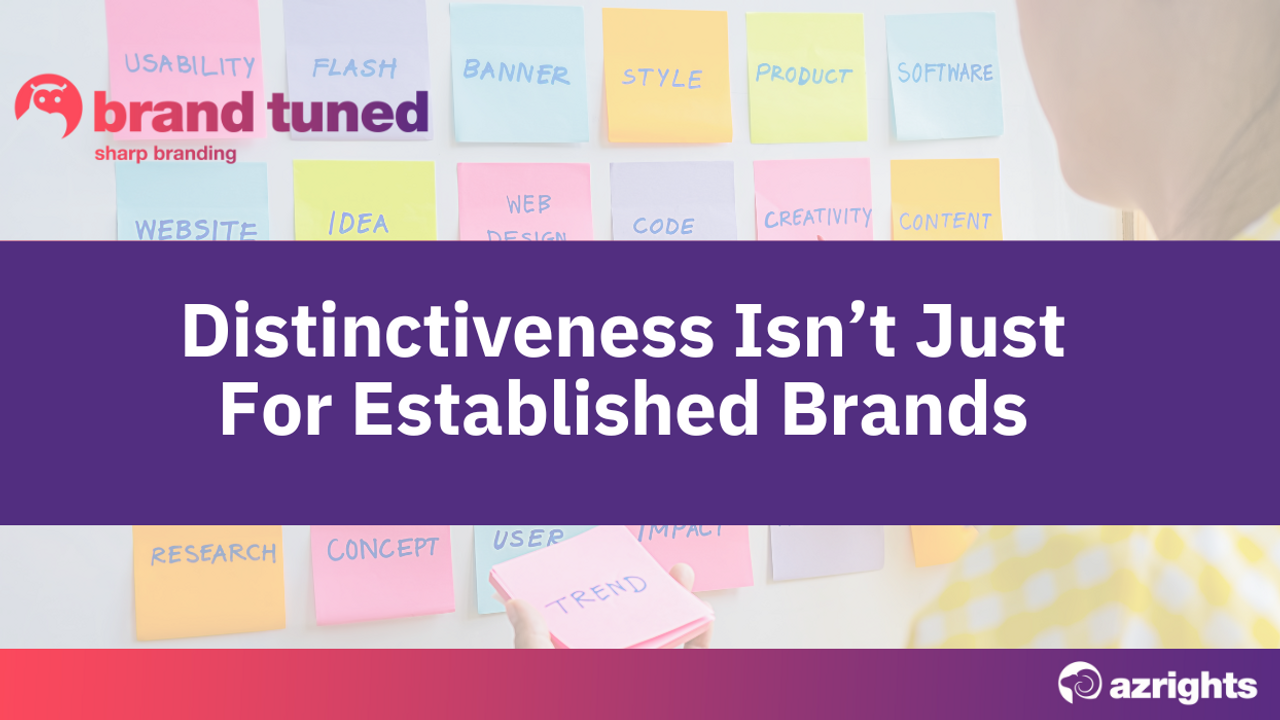Distinctiveness Isn’t Just For Established Brands
Aug 12, 2022
A podcast discussing differentiation suggested distinctiveness is relevant to big brands like those in Byron Sharp’s book, How Brands Grow. The guest argued that small businesses need to focus primarily on differentiation.
This view ignores what we know about how our brains work. Decision science, and research by Daniel Kahneman outlined in Thinking Fast and Slow show that we buy on emotion and justify our decisions rationally. Often buyers don’t look closely at all the details. They may not even be aware of your differentiation.
It follows that distinctiveness is always important at all stages of a business’ life, not just when a business is a sizeable brand.
Distinctiveness is about being recognisably like yourself, so you’re not mistaken for other brands. The sooner you get into your target customer’s mind the better. That’s why it’s a bad idea to keep making radical changes to your visual identity. Get the identity right at the outset when you first create your brand. Focus on distinctiveness by choosing a legally effective name, logo, symbol, tagline, colours and any music.
It’s essential these identifiers be as distinctive as possible under trademark law. To truly stand out in your category long term choose brand identifiers that you can legally protect and readily defend. Then your uniqueness can’t be copied.
The purpose of your identifiers is to designate the origin of your brand. That’s how you ensure you are not confused with competitors.
You can and should take steps to stop any competitor copying of your distinctiveness. Protecting your uniqueness is essential. When you have strong identifiers, expensive disputes are less likely to be necessary to assert your rights. It’s easier to enforce your trademarks.
Differentiation
Differentiation puts the accent on how you do business, what you offer, and the details of your offerings. You need to choose differences that matter to consumers.
With differentiation, you are focusing on ensuring your brand is perceived as desirable due to what only you offer. You point out how you differ to competitors, be it due to your unique business model, or because you offer variety that competition don’t provide or whatever.
It’s only possible to be the only one offering something, if you have patented technology underlying your differentiation or are introducing a new concept such as loyalty cards (when Tesco initially introduced them).
Even with patented technology your differentiation can ultimately be copied by competitors because your patent will expire after a maximum of 20 years if it’s not invalidated sooner.
Positioning
Positioning is less selfish in its focus because the accent is on helping the consumer to understand what you do and what you stand for. You’re describing your offerings, explaining how you fit in and what you believe is important that the consumer should know about your brand. So, Volvo found success with its positioning strategy of being all about safety. Consumers for whom safety is the priority choose the brand.
Essentials to focus on
Designing a distinctive brand, and then making consistent use of your identifiers is how you ensure consumers recognise that it’s you. Focus on distinctiveness from the outset.
What people don’t appreciate about distinctiveness is that choices such as of the right brand name, can give you patent like protection.
If you initially have patented technology protecting your differentiation, distinctiveness is what enables you to gain massive advantage over competitors in the long term.
Once your patent expires competitors can’t introduce a competing product saying that their product is similar to yours. They would be infringing your trademark rights if they were to do so. Instead, they must build up recognition for their product and name independently without relying on the fact that you made a product well-known.
Clubcard
That’s why it was such a crass mistake for Tesco to choose a name like Clubcard for its loyalty card scheme. It could not trademark the name, so had no way to stop competitors copying its differentiation strategy even though it was introducing a totally new concept into the market.
Every other business was able to introduce their own version of loyalty cards. They benefited from the considerable advertising spend Tesco had incurred in making the concept of loyalty cards famous because they could use the name Clubcard to describe their loyalty card schemes. If only Tesco had used a better branding agency, it would have chosen a distinctive name. That’s the way to erect a barrier to entry and keep out the competition.
Whatever stage you’re at in your business don’t ignore distinctiveness. It’s how you become inimitable.
As distinctiveness is invariably about brand identifiers like your name, any symbols, tagline, music etc it’s important to understand and consider how the law protects identifiers when you’re choosing them. Think about what would be involved to protect a name or other identifiers before you finalise your choice.
Brand Tuned Accreditation
Are you satisfied that you thoroughly understand how to choose names and taglines that are capable of functioning as trademarks?
Do you know what considerations are important when you’re choosing symbols, shapes, music, packaging, and other distinctive identifiers?
As training in IP is often the missing ingredient in branding education, consider signing up to the Brand Tuned Accreditation program. Among other things, you’ll learn how to take account of IP when creating brand elements like names, and other identifiers.
The Brand Tuned program starts on 8 September. This newsletter will be on holiday for the next couple of weeks and will return on 2 September.
In the meantime, check out the episode of my podcast where I discuss differentiation with Mark Ritson and be sure to catch up with past episodes until we resume weekly episodes in September.

